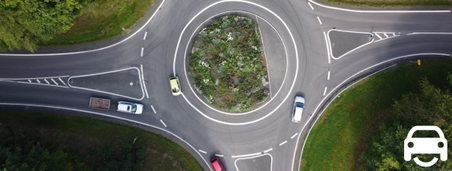Men Are Six Times More Likely To Be Disqualified From Driving

Men are six times more likely to be disqualified from driving according to new Driver and Vehicle Licensing Agency (DVLA) data obtained by Feel Good Contacts, through a Freedom of Information (FOI) request.
The data, which runs from January 2014 to the end of July 2018, revealed that 421,565 men have been disqualified from driving over the past four years, compared to 66,272 women.
It also showed disqualification by gender, age and gave a breakdown of why the individual was disqualified. The age at which men were most frequently disqualified was 26, totalling 18,107 over the past four years. Comparatively, the common female age for disqualification was three years older at 29, totalling 2,267 women.
Disqualified From Driving: Reasons For Disqualification?
Large discrepancies between men and women for specific offences were also uncovered.
Men were over 23 times more likely to be disqualified for dangerous driving, according to the figures. In addition, men were over 16 times more likely to be banned for driving whilst already disqualified.
Similarly, men were over 15 times more likely to be banned for driving or attempting to drive whilst above the limit for drugs, and over ten times more likely to be disqualified for driving without due care or consideration for other road users.
"If we are to make any inroads into significantly reducing the numbers of people killed or injured on our roads, we need to directly influence young men in their early to mid-twenties."
Disqualified From Driving: What Needs To Be Done?
Rodney Kumar, spokesman for UK road safety charity IAM RoadSmart, said: “These findings strongly back up our research and that of the Government, which shows we need a targeted approach aimed at the biggest ‘at risk’ group in the UK when it comes to road crashes – that is young men in their early to mid-twenties. If we are to make any inroads into significantly reducing the numbers of people killed or injured on our roads, we need to directly influence this group through re-education on attitudes from an early age, backed up by zero tolerance in enforcement to stop them in their tracks and make them realise bad driving just isn’t worth it.”
Disqualified From Driving: Increase In Poor Eyesight
Feel Good Contacts also requested data on the number of drivers that had alerted the DVLA to an ‘eyesight issue’ over the last five years - and found an increase of 20%. The Government organisation provided stats from 2013 to 2017, with 166,148 notifications received in 2013, compared to 200,289 last year.
The number of licenses that were “refused on application or revoked for eyesight-related conditions over the last five years” totalled 42,803 for Group 1 drivers (car/motorcycle) and 6,965 for Group 2 drivers (lorry/bus).
Eyesight Requirements For Driving
"Importantly, we, as drivers, should always remember to get our eyes tested if we feel we are struggling to see a minimum of 20 metres away, the minimum eyesight standard required by all drivers."
Ashish Mathur, eye care specialist at Feel Good Contacts, said: “As National Road Victim Month has just gone and Road Safety Week is coming up, now is the time to stress the importance of this topic. We should all ensure we are at our best when driving, and a big part of that is making sure we get enough rest before heading out so that we are receptive and alert. Importantly, we, as drivers, should always remember to get our eyes tested if we feel we are struggling to see a minimum of 20 metres away, the minimum eyesight standard required by all drivers.
“We have many customers who require eyewear for driving; it’s crucial not only for their eye health but for the safety of other road users. We encourage the public to get their eyes tested regularly and to notify the DVLA immediately if anything changes in regards to their eye health.”




